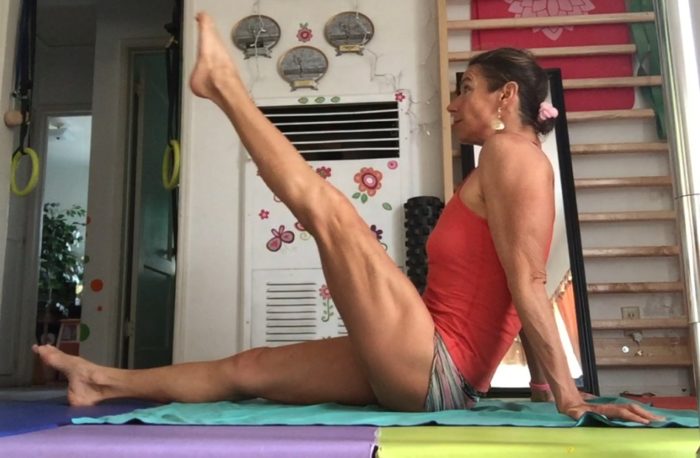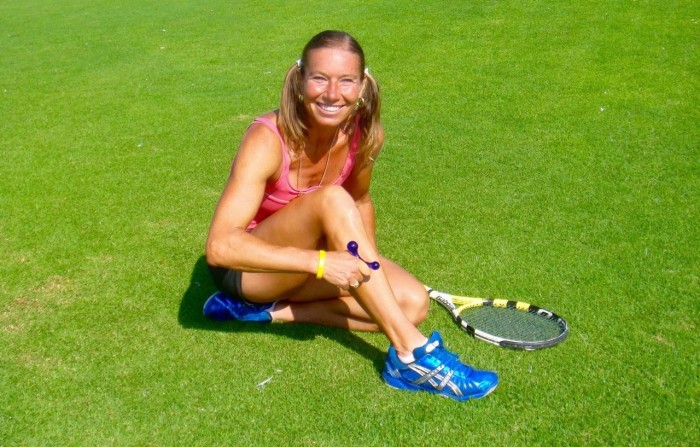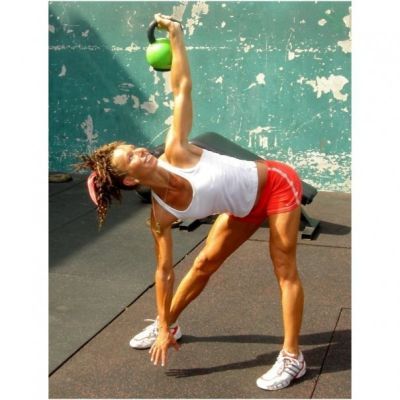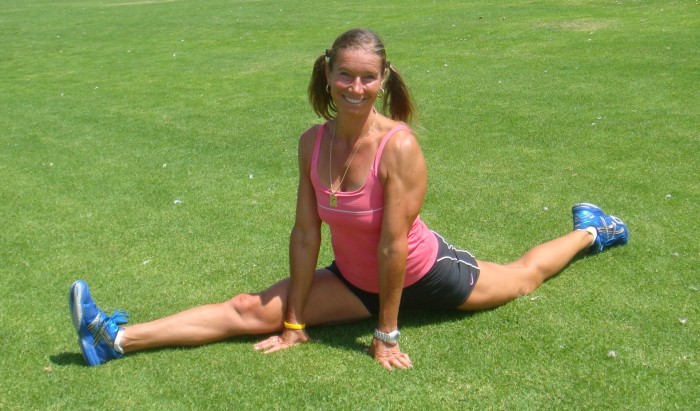Lifestyle with a lot of sitting and playing one-side dominant sports can be close to devastating to your body’s optimal function. How is your muscle stability? Can you move through space in full range of motion? Can you stand and balance on one foot? Can you do deep lunges with narrow stance without losing your balance? Can you squat deep with control?
Tennis and daily life brings a lot of imbalances and asymmetries in your body, which further worsen a proper movement and motor control. The entire body’s muscular-skeletal segments work together in unity to create functional movements. If any segment doesn’t work optimally, the entire chain suffers and further problems or injuries can occur.
Let’s look at common problems for a “common” athlete. Of course, we can always find somebody who has completely opposite problems, but let us focus on the majority of high-level or recreational athletes. The older the athlete, the more distinct the issues are as they have been accumulating them for longer time. The young athletes will be in the same boat if they don’t take care of their bodies now.
Sedentary people develop certain tendencies and active people develop other tendencies. Often, athletes are a combination of both. They are highly intensely active for a part of the day, the other part they are sedentary as they recover, work, or study. These are the tendencies:
1) Feet muscles are weak and not functioning correctly thanks to poor footwear and to being neglected in the exercise regimen. You will highly benefit from exercising your intrinsic feet muscles, covered in this previous article.
2) The ankle complex is often stiff with poor mobility, thanks to tight calf muscles. Myofascial release and increasing mobility should be a priority.
3) The knee complex is often weak, such as inward-buckling knees during landing or running, and can cause serious overuse problems and degeneration in the future. Strengthening and increased stability should be your focus.
4) Hips complex is generally extremely tight and inflexible, with decreased range of motion in extension and external rotation. These muscles are important in every athletic movement you do, and if they don’t function correctly, other muscle groups (hamstrings and lower back) compensate and develop problems. You need to work on improving the flexibility and mobility in your hips. Pigeon stretch, half lotus stretch and myofascial release will do the job.
5) Lower back (lumbar and sacral area) is often weak and you need to improve its stability and motor control, or your body will compensate with stiffness from mechanical stress. Planks, side planks, supermans, scorpions and similar exercises.
6) Upper back (thoracic area) is often stiff and inflexible because of poor postural and lifestyle habits with head forward and slouching posture. You need to work on improving flexibility of your upper back, for example with this myofascial release exercise.
7) Neck (the lower part) is weak from poor postural habits with rounded shoulders and forward protruding head. You need to strengthen the area to add more stability. The upper part of the neck is often stiff and tight because of the overworked muscles that are resisting the heavy weight of your forward-sitting head.
8) The scapular area is often weak and needs to get extra stability.
9) The shoulder joint is tight and needs to get more mobility.
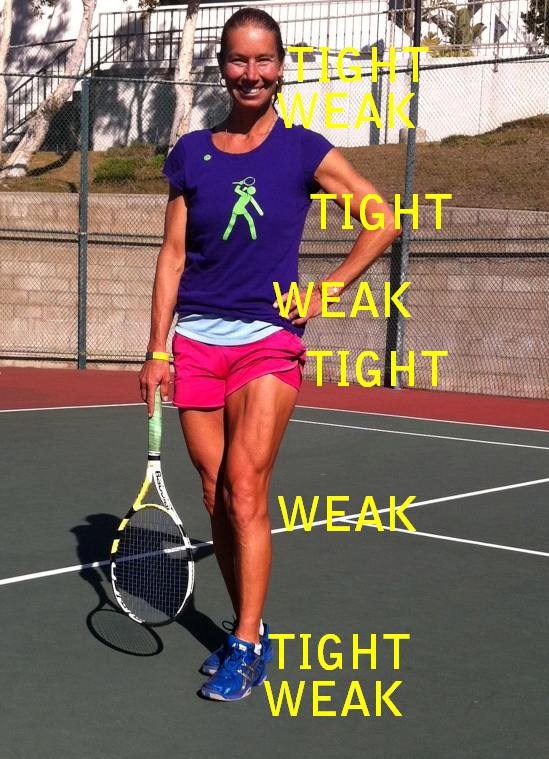
You see, from the feet and up, the tightness and weakness alternate. Weak feet, tight ankles, weak knees, tight hips, weak lower back, tight upper back, weak lower neck, tight upper neck. The entire chain is connected and each segment has a tight relationship with the neighbor segment. You can break this nice “weak-tight” cycle with an acute injury or some other structural problems, but it’s not a good way to break the cycle.
The best way to break the cycle is to address each segment AND the joints below and above it. It is not enough to address just the joint itself, because its movement correlates to the adjacent joints. If your hips and ankles continue to be tight, it is going to be hard to improve the stability of your knees. You need to address all parts.
If you currently have a problem with any segment in your kinetic chain, don’t forget to look at the adjacent joints and they most probably will have the opposite problem. Start addressing them first. Strengthening of the weak area has to be accompanied with stretching and myofascial release of the neighboring joints.
While there are people who have slightly different problems, for the majority of us athletes, this simple guide to improving your kinetic chain should make big difference:
Stable feet –> flexible ankles –> stable knees –> flexible hips –> stable lower back –> flexible upper back –> stable neck –> flexible shoulders.
Stable means stronger and better motor control, flexible means improved mobility. If you have tightness and stiffness in certain areas, it is there for a reason: maybe you had an injury or have been repeating faulty mechanics over long time? If your body doesn’t stabilize correctly, it will find the way to compensate and find the stability in different way, through stiffness and tightness. You may stretch and roll on the roller to make the stiff area looser, but if you don’t address the surrounding areas, the stiffness will return. Often, stiffness is body’s way to stop the weakness.
If you want to prevent future injuries, you need to address and improve all your segments, and the ones below and above it. You have to get all your movements balanced off both left and ride side. If you are not balanced, spend enough time to work on it patiently. Improve your movement pattern until it is perfect. You need to move well first before you can move more. Recheck yourself regularly and continuously work on becoming an injury-free, ageless athlete.

